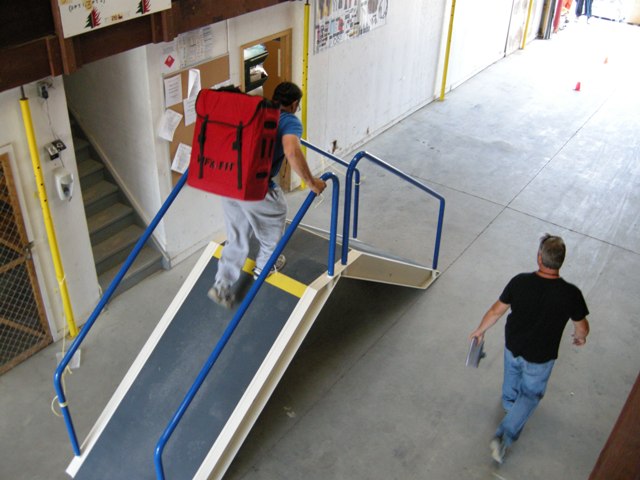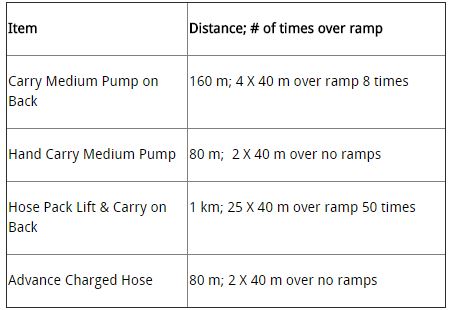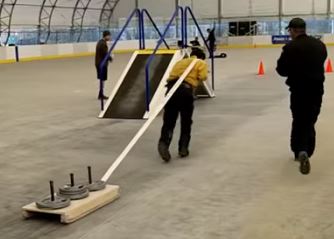
This article was written by Rae Brooks while she was working as a Public Information Officer on the Motorway Complex of fires in north-central Idaho.
KOOSKIA, Idaho — We call it extended attack. They call it “sustained action.” We build fire line. They build “fire guard.” Our fires are finished when they’re controlled. They don’t stop until they’re at “extinguishment.”
The Canadian firefighters who spent two weeks filling leadership positions on the Motorway Complex of fires in north-central Idaho might talk about fire a little differently — and even fight it differently — but they found they share the same goals as American firefighters.
“Swinging a Pulaski is the same from High Level to Florida,” said Canadian firefighter Wade Klein, who served as a task force leader on the Slide Fire. “When it comes down to it,” added colleague Gregory Williams-Freeman, a task-force leader on the Woodrat Fire, “fire is fire, and we all know that business.”
High Level, by the way, is a town in northern Alberta. Although the common incident command system used by both countries minimized differences, a few other translations were needed to integrate the Canadians into the U.S. firefighting operation.
The fire behavior analyst, for example, started adding metric conversions for chains and rates of spread at the morning briefing. The word hectares came up occasionally in lieu of acres. And the Canadians, all from the western province of Alberta, had to get used to talking about percentage of containment, instead of their usual categories for fires: Out of Control, Being Held, Under Control and Extinguishment.
The Albertans came to Idaho through a joint agreement between the United States and Canada that allows each country to call in firefighting resources from the other in times of need. Under the same agreement, American firefighters flew to Canada to help out in July at the height of an intense fire season in western Canada.
Last month, after a lightning burst sparked dozens of fires across Idaho and the Pacific Northwest, it was the Americans’ turn to call for international assistance. Besides Alberta, Canada also sent firefighters from Ontario and the Yukon. Australia and New Zealand also aided the effort.

The 23 Alberta firefighters working under Mark Ruggiero’s Southwest Area Type 1 Incident Management Team at the Motorway Complex included six division supervisors, 10 task force leaders, four heavy equipment bosses, a helibase manager and two helicopter crew members. Kris Heemeryck accompanied the group as a representative of the Alberta Ministry of Agriculture and Forestry.
It was the Albertans’ first exposure to a U.S. Type 1 team in action. They praised the chow-line food, the clean showers and the well-stocked medics. They also appreciated being able to eat outside under open-sided tents. At Alberta fire camps, mosquitoes and black flies force firefighters to dine inside in oil-field trailers.
Phil Bruner was serving as groomsman at a crew member’s wedding in Edmonton when he got the word about the Idaho assignment. He stepped out of the church after the ceremony and turned his cell phone on to find his supervisor had called to see if he wanted to go fight fire in the United States.
Bruner deliberated for half an hour. He had tickets to a music festival he had looked forward to attending for months, which he would miss if he took the assignment. But Canadian firefighters almost always fight fires only in their own provinces. Interprovincial requests come infrequently. International requests are even rarer.
Finally he phoned a friend for advice. “He didn’t even ask why I didn’t want to go,” said Bruner. “He just said, “Don’t be dumb. Go.”

A total of 42 Alberta firefighters flew to Missoula, Montana, on Aug. 24 on a jet contracted by the National Interagency Fire Center for two days of briefings, including an introduction to fire shelters. Canadian firefighters don’t normally carry them.
About half the group was assigned to other fires in Idaho and Montana. Some of the group of 24 that ended up at the Motorway Complex started out at another complex to the north. The differences between Canadian and U.S. firefighting techniques quickly became apparent.
Because of the vast distances involved, the lack of roads and the need for a speedy response, almost all initial attack in Alberta is done by helicopter. The Albertans generally fight fire with water, because they have it, rarely building hand line, especially in the flat, swampy northern part of the province where the duff may be six-feet deep.
Instead of building line, they rely on hose lays or dozers to encircle fires. When an area is dry enough, dozers work in groups of three, with the lead dozer knocking timber down, the second pushing it away from the fire, and the third clearing a line down to mineral soil.
In Idaho, the Canadians found U.S. hot shot crews performing the same task, but in a manner more suited to the terrain and vegetation: constructing hand line, then burning off those lines. The Albertans do very little hand ignition, relying more on helitorching.
Alberta firefighters generally are transported to and from the fire line by helicopter. They immediately start laying hose, while helicopters do bucket drops, with added support from air tankers. With a raging crown fire, they don’t stop to deploy hose, instead relying on an aggressive air attack. When extinguishing hotspots, Alberta firefighters sometimes have to use chain saws to cut several layers of duff blocks to ensure the spot is properly cooled.
In Idaho, the Albertans also ran into wildland-urban interface issues they don’t normally face, working close to — and even in — the communities of Syringa and Lowell. In contrast, Alberta’s forests, especially in the north, are largely empty. Alberta is about the same size as California and Nevada combined, but has just a tenth of the population.
“Where we work is so remote, there’s only a cabin or two,” said Dave Leegstra, task-force leader on the Woodrat Fire. “Here it was houses, and lots of them.” Added Bruner, a task-force leader on Slide: “Our wildland-urban interface is flying into lookouts and trappers’ cabins and putting up sprinkler systems.”
Williams-Freeman, another task-force leader, worked closely with the Lolo Hotshots and was so impressed by them that he hopes to join them for a season. As a member of the Blackfeet Nation, Williams-Freeman is entitled to dual Canadian-U.S. citizenship, so is able to work in the United States. He picked the Hotshots’ brains and carefully studied their set-up to get ideas for his own unit crew, the more plainly titled Alberta hotshot equivalent.
Unit crews were created in Alberta just four years ago. Unlike U.S. hotshot crews, nothing separates them visually from other crews. They wear the same garb as other Alberta firefighters and their 20-person crews drive around in five pickup trucks, not the distinctive buggies of U.S. hotshots.
Last week, on the last day of their assignment, the dawn morning briefing at the incident command post where most of the Albertans were billeted included a presentation of a personalized thank-you certificate and a Southwest Area challenge coin to each Canadian firefighter. Inscribed at the certificate’s bottom: “Geography made us neighbors; working together made us friends.”
The tough crowd of division supervisors, task-force leaders, crew bosses, engine bosses and other fire leaders saluted the Albertans by singing the first few bars of Canada’s national anthem to their new fire friends.









